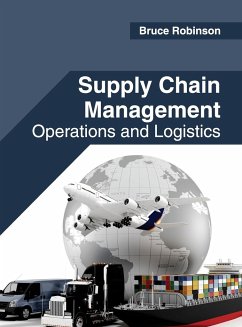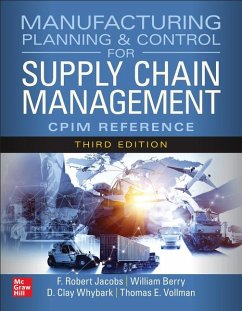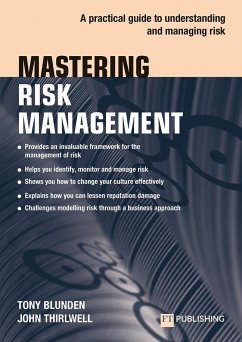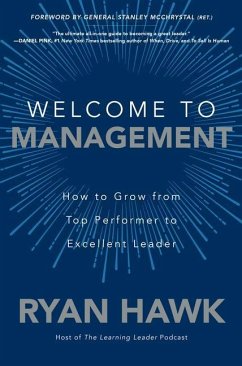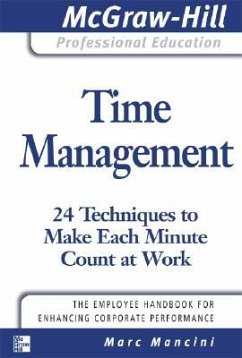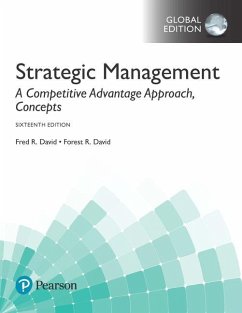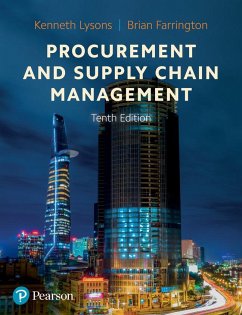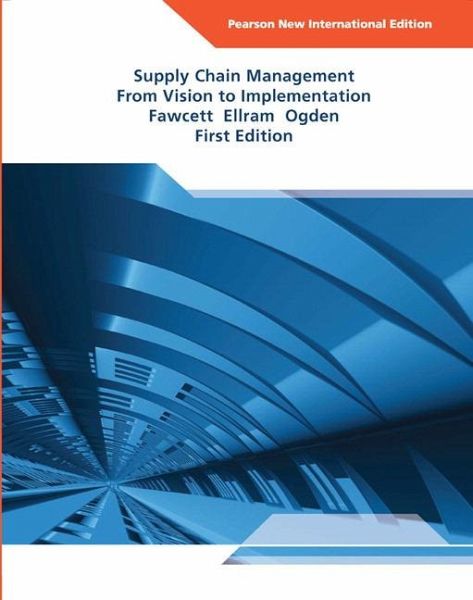
Supply Chain Management: From Vision to Implementation
Pearson New International Edition
Versandkostenfrei!
Versandfertig in 2-4 Wochen
122,99 €
inkl. MwSt.

PAYBACK Punkte
61 °P sammeln!
For undergraduate or MBA courses in Supply Chain Management.
This text takes a strategic, managerial, and cross-functional view of supply chain management, enabling managers to participate in the vision and implementation of world-class supply chain networks. To achieve this, the book introduces a Supply Chain Roadmap process model as a guiding framework for designing and implementing integrated supply chains. Students gain the knowledge and analytical tools to perform analysis and act as change agents within their organizations. Features + Benefits
This text takes a strategic, managerial, and cross-functional view of supply chain management, enabling managers to participate in the vision and implementation of world-class supply chain networks. To achieve this, the book introduces a Supply Chain Roadmap process model as a guiding framework for designing and implementing integrated supply chains. Students gain the knowledge and analytical tools to perform analysis and act as change agents within their organizations.
How do you help students see the cross-functional nature of processes and tie the concepts together?
Supply Chain Roadmap
This process model provides a guiding framework to help students learn the decision involved in designing supply chain strategy.
The Roadmap helps students understand the cross-functional nature of business, and ties together the material in all chapters.
This feature is supported by a running Opening Story in the beginning of each chapter.
Chapter Layout
This layout follows and reinforces the integral Supply Chain Roadmap theme throughout.
The material is divided into three main sections: each consists of five chapters, which are strategically grouped together to easily allow the tying of concepts together.
The chapters can be used selectively to support teaching objectives, curriculum design, and student background.
Do you use real world examples to showcase the decisions managers make in implementing good supply chain strategy?
Real-world, Global Examples.
Textual material is demonstrated through the discussion of modern, relatable corporations.
Running Opening Story.
At the beginning of each chapter, these vignettes help students see the challenges managers face as they seek to implement a winning supply chain strategy.
End-of-Chapter Cases.
These cases highlight critical strategic decisions, practices and tools required to achieve supply chain success.
Do students need some review of quantitative techniques?
Quantitative Supplements.
Available at the end of select chapters, these supplements help students learn and review basic tools that are used in day-to-day decision-making.
Supplemental problems and suggested Web exercises reinforce quantitative learning.
These sections enable professors to tailor their course for either a more strategic or analytical approach to SCM learning.
OTHER POINTS OF DISTINCTION
Author Experience - Blend of Research and Consulting Experience.
The authors are active teachers, consultants, case writers, and researchers in a variety of areas including supply chain management, cost analysis, logistics, global business, and supply chain integration. They have worked with supply chain leaders across a variety of industries around the world and published over 200 articles in these areas.
A New Spin
The authors offer fresh material and write with an engaging, interactive voice.
The text aims to help students gain the knowledge and analytical tools to perform in the SCM world and act as change agents within their organizations.
This text is available for personalization in the PHCBR custom database program. Select only the chapters you require or supplement with recommended case studies all under one cover. CLICK HERE to go directly to the PHCBR book-build site or visit our product page for additional information at pearsoncustom.com/business .
Part I: The Building Blocks of Supply Chain Management
1. Supply Chain Management and Competitive Strategy
2. Customer Fulfillment Strategies
3. Process Thinking: SCM's Foundation
4. The New Product Development Process: Managing the Idea Infrastructure
5. The Order Fulfillment Process: Managing the Physical Flow Infrastructure
Part II: Designing the Supply Chain
6. Scanning and Global Supply Chain Design
7. Supply Chain Mapping
8. Supply Chain Cost Management
9. Core Competencies and Outsourcing
10. Supply Chain Rationalization and Role Shifting
Part III: Collaborating Across the Supply Chain
11. Relationship Management
12. Information Sharing
13. Performance Measurement
14. People Management: Bridge or Barrier to SCM
15. Collaborative Innovation
This text takes a strategic, managerial, and cross-functional view of supply chain management, enabling managers to participate in the vision and implementation of world-class supply chain networks. To achieve this, the book introduces a Supply Chain Roadmap process model as a guiding framework for designing and implementing integrated supply chains. Students gain the knowledge and analytical tools to perform analysis and act as change agents within their organizations. Features + Benefits
This text takes a strategic, managerial, and cross-functional view of supply chain management, enabling managers to participate in the vision and implementation of world-class supply chain networks. To achieve this, the book introduces a Supply Chain Roadmap process model as a guiding framework for designing and implementing integrated supply chains. Students gain the knowledge and analytical tools to perform analysis and act as change agents within their organizations.
How do you help students see the cross-functional nature of processes and tie the concepts together?
Supply Chain Roadmap
This process model provides a guiding framework to help students learn the decision involved in designing supply chain strategy.
The Roadmap helps students understand the cross-functional nature of business, and ties together the material in all chapters.
This feature is supported by a running Opening Story in the beginning of each chapter.
Chapter Layout
This layout follows and reinforces the integral Supply Chain Roadmap theme throughout.
The material is divided into three main sections: each consists of five chapters, which are strategically grouped together to easily allow the tying of concepts together.
The chapters can be used selectively to support teaching objectives, curriculum design, and student background.
Do you use real world examples to showcase the decisions managers make in implementing good supply chain strategy?
Real-world, Global Examples.
Textual material is demonstrated through the discussion of modern, relatable corporations.
Running Opening Story.
At the beginning of each chapter, these vignettes help students see the challenges managers face as they seek to implement a winning supply chain strategy.
End-of-Chapter Cases.
These cases highlight critical strategic decisions, practices and tools required to achieve supply chain success.
Do students need some review of quantitative techniques?
Quantitative Supplements.
Available at the end of select chapters, these supplements help students learn and review basic tools that are used in day-to-day decision-making.
Supplemental problems and suggested Web exercises reinforce quantitative learning.
These sections enable professors to tailor their course for either a more strategic or analytical approach to SCM learning.
OTHER POINTS OF DISTINCTION
Author Experience - Blend of Research and Consulting Experience.
The authors are active teachers, consultants, case writers, and researchers in a variety of areas including supply chain management, cost analysis, logistics, global business, and supply chain integration. They have worked with supply chain leaders across a variety of industries around the world and published over 200 articles in these areas.
A New Spin
The authors offer fresh material and write with an engaging, interactive voice.
The text aims to help students gain the knowledge and analytical tools to perform in the SCM world and act as change agents within their organizations.
This text is available for personalization in the PHCBR custom database program. Select only the chapters you require or supplement with recommended case studies all under one cover. CLICK HERE to go directly to the PHCBR book-build site or visit our product page for additional information at pearsoncustom.com/business .
Part I: The Building Blocks of Supply Chain Management
1. Supply Chain Management and Competitive Strategy
2. Customer Fulfillment Strategies
3. Process Thinking: SCM's Foundation
4. The New Product Development Process: Managing the Idea Infrastructure
5. The Order Fulfillment Process: Managing the Physical Flow Infrastructure
Part II: Designing the Supply Chain
6. Scanning and Global Supply Chain Design
7. Supply Chain Mapping
8. Supply Chain Cost Management
9. Core Competencies and Outsourcing
10. Supply Chain Rationalization and Role Shifting
Part III: Collaborating Across the Supply Chain
11. Relationship Management
12. Information Sharing
13. Performance Measurement
14. People Management: Bridge or Barrier to SCM
15. Collaborative Innovation
For undergraduate or MBA courses in Supply Chain Management. This text takes a strategic, managerial, and cross-functional view of supply chain management, enabling managers to participate in the vision and implementation of world-class supply chain networks. To achieve this, the book introduces a Supply Chain Roadmap process model as a guiding framework for designing and implementing integrated supply chains. Students gain the knowledge and analytical tools to perform analysis and act as change agents within their organizations.
Dieser Artikel kann nur an eine deutsche Lieferadresse ausgeliefert werden.





